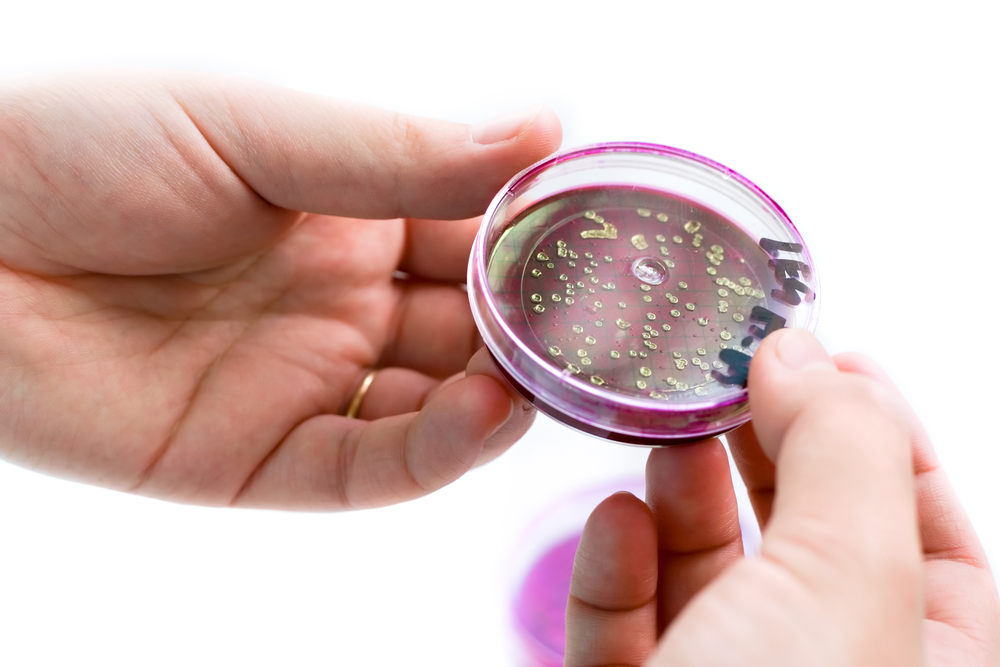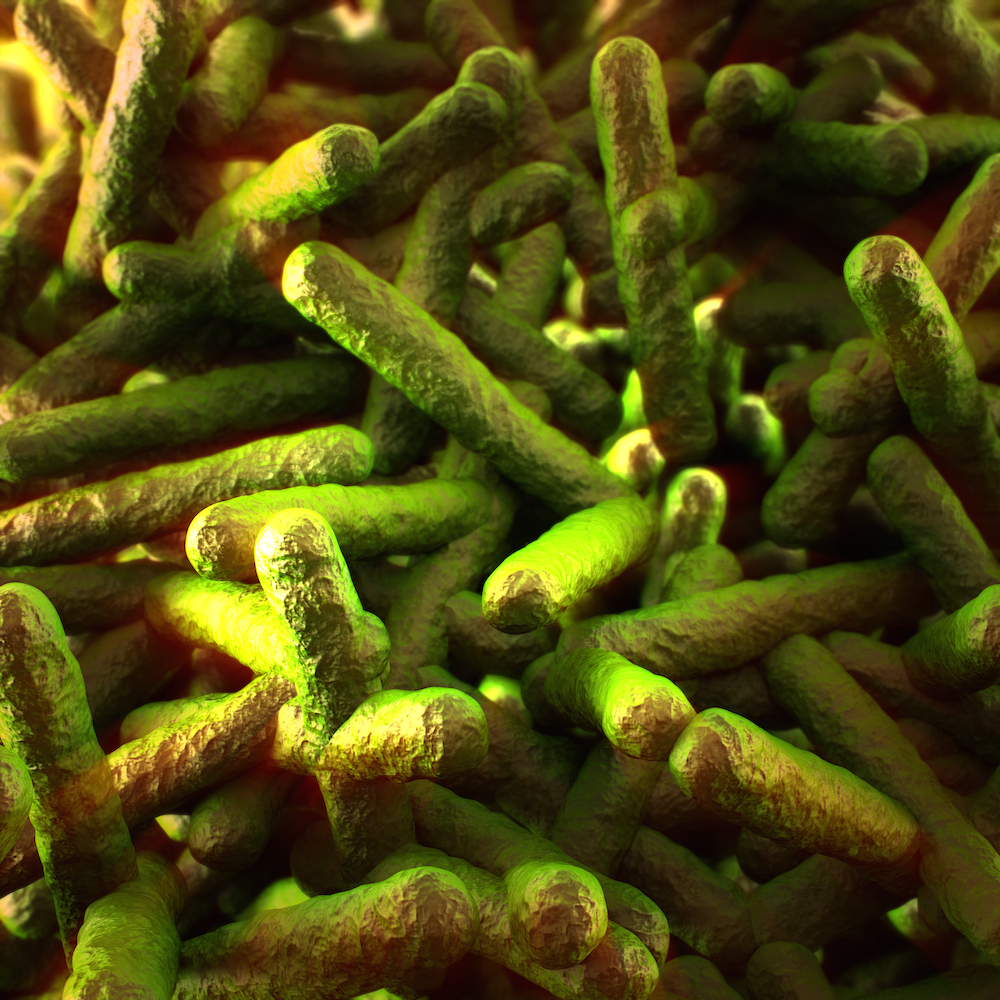Biofilm can form just about anywhere in a food processing plant — even the cleanest looking surfaces can be a threat to food safety if an invisible layer of bacteria is present. Why does biofilm form and how can it be prevented? Knowing how to detect and eliminate biofilm is crucial to ensuring your food plant’s processing equipment is contaminant-free.
What is biofilm and why is it dangerous?
Biofilm sounds like something out of a biology textbook, and it is, but it works just like many other substances. When you clean your countertops regularly, food particles and moisture wipe off easily. The longer you go between cleans, the more buildup occurs, and the harder it is for you to remove with your usual household cleaners.
Bacteria thrive in food plants thanks to the moisture and nutrition they produce. When these organic and inorganic compounds mix together, they create a “conditioning layer,” which is an environment suited for bacterial growth. As free-floating bacteria multiply, they begin to secrete extracellular polymeric substances (EPS), which helps them stick to any surface and each other to create a film.
Having biofilm form in your plant is a risk to food safety and can lead to costly recalls. If biofilms go unchecked, they can adhere to surfaces so firmly that they become resistant to standard sanitization procedures. Since biofilms can be home to strains like listeria, salmonella and E. coli, it’s crucial to prevent their growth.
Where do biofilms grow?
Biofilms can form on all types of surfaces, including plastic, metal, glass, cement and wood. They’re most likely to form on rougher, more porous surfaces or on equipment with cracks and scratches. Biofilm also tends to form in harder-to-reach places tucked away from regular cleanings, like the underside of a conveyor belt.
Of course, prevention is the best solution when it comes to biofilms. Sanitary equipment design can eliminate its formation in any areas that may be difficult to clean, like gaskets, O-rings and piping. Food processors should develop and maintain a thorough sanitation regimen to help prevent a conditioning layer from attaching to equipment surfaces.
Because biofilm is made up of microscopic bacteria, it can be hard to detect with the naked eye, especially early in its growth. However, food processors can be on the lookout for:
- A rainbow-like appearance on stainless steel surfaces
- A slimy feeling on surfaces that otherwise look clean
- Sour or off-putting odors
If plant team members suspect biofilm is forming, there are testing methods that can confirm its presence. These include:
- Adenosine triphosphate (ATP) bioluminescence — ATP is the energy molecule stored in all microorganisms. By analyzing ATP levels, this test can reveal the presence of living bacteria on equipment surfaces. However, this test only detects biofilms in the early stages of formation when bacteria is actively searching for nutrients.
- UV light detection —Ultraviolet light clearly reveals the presence of organic sediment otherwise invisible to the naked eye.
- Total organic carbon (TOC) measurement — TOC measurement in food processing settings is most often used to test rinse water after it’s been used to clean equipment or piping. A low TOC measurement helps validate cleaning efficacy.
How do you remove biofilm?
Food processors should know that, if the right approach is not taken, it can be extremely difficult to remove biofilm. Certain strains of salmonella can live up to 10 years in food processing environments, surviving cleaning attempts and decommissioning of contaminated equipment. If testing confirms its presence, there are multiple steps to removing biofilm effectively:
1. Dry clean — Before using chemical cleaning agents, remove as much visible soil as possible by scrubbing, brushing and sweeping the affected surface. However, be careful not to clean so rigorously as to scratch or etch the surface, as this will only create an environment prone to future biofilm growth.
2. Rinse — Rinse equipment using water at 140°F, the temperature best suited for cleaning with low pressure/high volumes after scrubbing. High volumes allow a sheeting effect to occur, causing the detached biomass to drain.
3. Apply chemical treatment — The proper chemical to use for biofilm removal will depend on the type of food materials used in the food plant. Collaborate with a sanitation provider to determine the optimal combination of chemicals for your facility. Studies have shown that sodium hypochlorite, iodine and peracetic acid are among the most effective. Allow an extended exposure time (usually at least five minutes) for the chemicals to dissolve the biofilm effectively. Then, scrub and brush the equipment to completely remove all layers of bacteria. Again, be sure to avoid scratching the surface.
4. Apply a final rinse — Rinse the equipment once more following prior guidelines.
5. Retest the equipment — Use one of the previously mentioned detection methods to confirm you have successfully eliminated the biofilm. Some areas may require multiple cleanings. The best way to prevent biofilm from forming is to thoroughly sanitize processing equipment between every shift, and inspect equipment surfaces regularly to ensure they are not contaminated by a resilient biofilm.
New technologies, including plasma treatments, ultrasound, light-based technologies, pulsed electric fields and high hydrostatic pressures, are all being tested as biofilm prevention and removal methods. Though these options are still undergoing research, some show major promise in helping prevent biofilm and increase food safety.
- Plasma treatment has a low penetration depth and was reported to be effective against biofilms, depending on the biofilm’s thickness and the type of surface it formed on.
- Ultrasound is a form of energy generated by sound waves at frequencies too high to be detected by the human ear (>16 kHz). Ultrasound has been tested as a biofilm removal method, but many studies demonstrated that it should be used in tandem with other methods.
- Ultraviolet light technology is based on the emission of UV light radiation, which has proven antimicrobial effects. UV light is known to cause byproducts in bacteria’s DNA that prevent it from replicating, ideally preventing bacteria from further adhering to equipment.
- Pulsed electric field (PEF) is a food processing technology that applies short, high-voltage pulses across a food material placed between two or more electrodes. The pulses make the cell permeable by damaging its membrane, making it more susceptible to sanitation efforts.
- High-pressure processing (HPP) has the ability to inactivate microorganisms and enzymes and has a minimal impact on nutritional properties of food.
Have questions about detecting and removing biofilm at your facility? Comment below or email me at foodforthought@stellar.net





Well written. Enough information to highlight the issue, causes, and cures. Brief enough ti fit into every busy persons schedule. Informative enough to get problems solved or headed off before they occur. Keep up the good work.
Tom B.
Fastener Systems, Inc.
VP
Tech Services Admin.